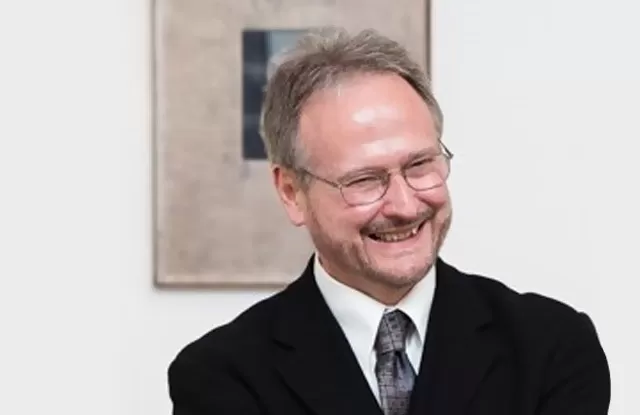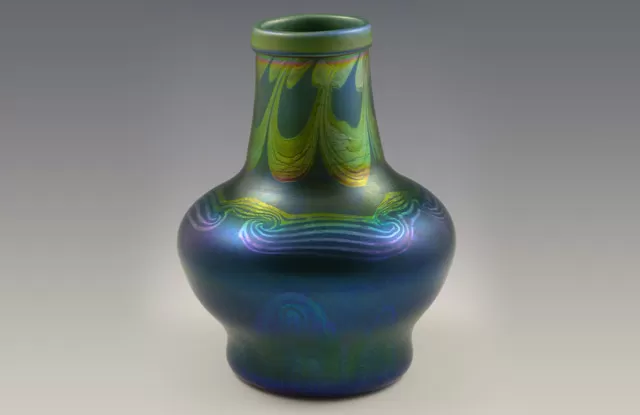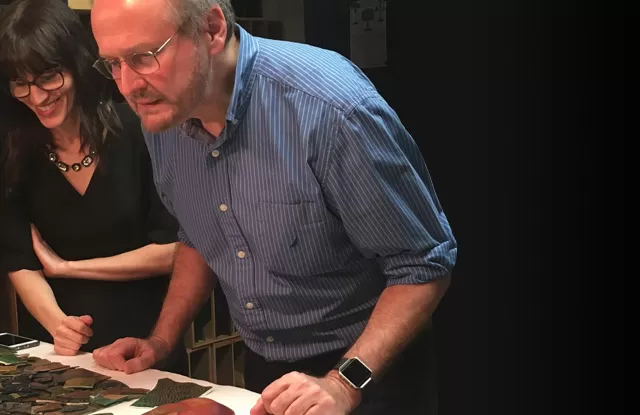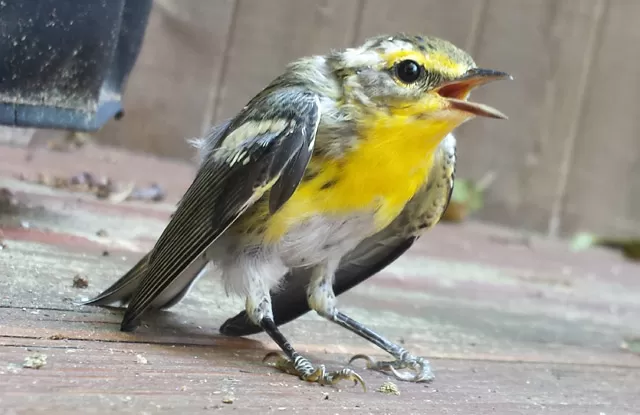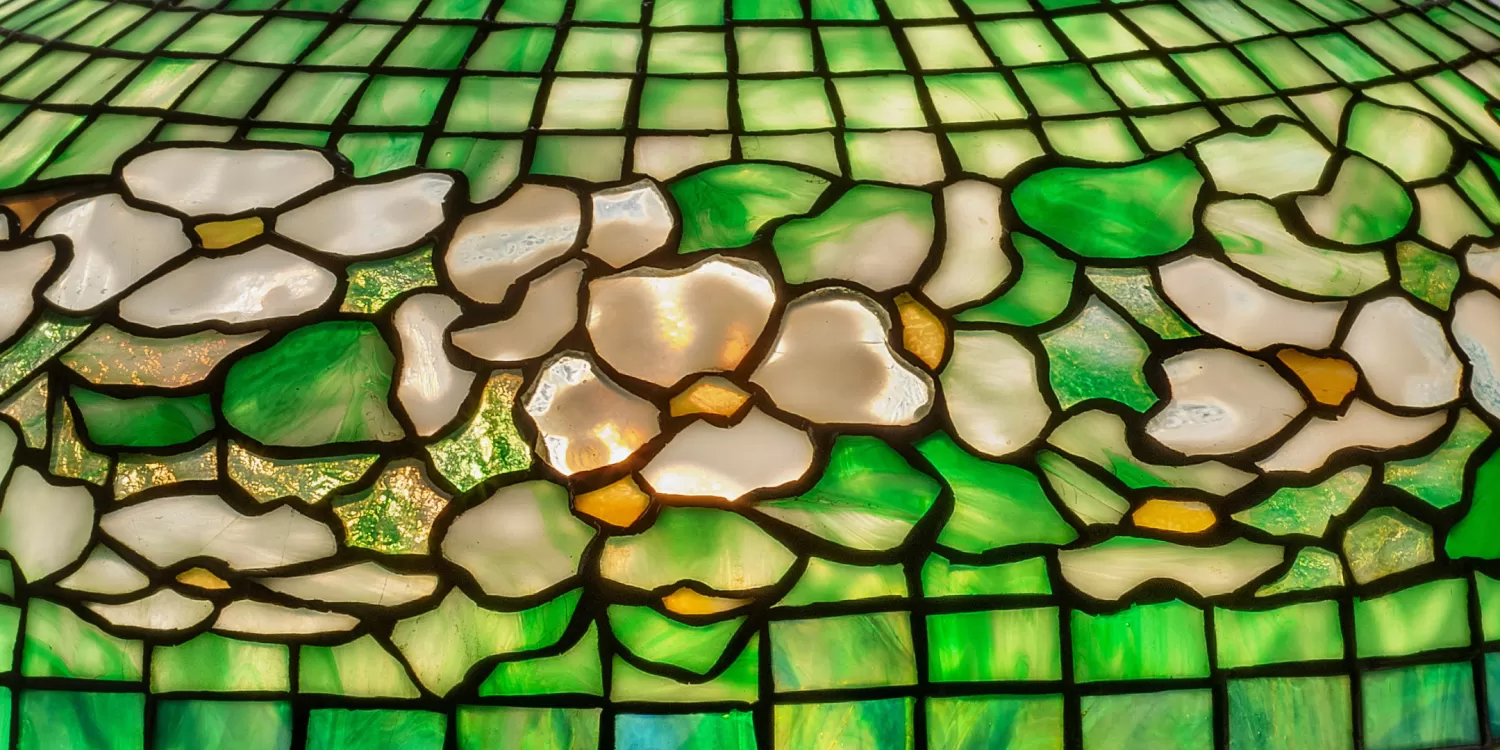Dr. Gregory A. Merkel (1954–2022)
We are heartbroken to share the news that our dear trustee, Dr. Gregory A. Merkel, suddenly passed away in January at age 67. An invaluable member of The Neustadt’s Board since 2013, Greg was a brilliant scientist, meticulous glass scholar, generous colleague, and cherished friend. Motivated by a quest for beauty and an insatiable intellectual curiosity, his enthusiasm for glass spanned all of its aesthetic, historic, and scientific aspects.
Over the course of Greg’s 40-year career with Corning Incorporated, he made significant contributions to the field of technical ceramics. Since 2008, he served as a Research Fellow in the Crystalline Materials Research Department. Known for his scientific rigor and superb writing skills, he was the recipient of important professional awards and held at least 42 patents. These accomplishments were little known to his friends and colleagues outside of Corning Incorporated because Greg was as modest as he was brilliant.
Within the American art glass community, Greg was renowned for his fascination with the rainbow-enrobed surfaces of iridescent glass created by Frederick Carder and Louis C. Tiffany. His interest in iridescent glass began around age four with his mother’s toothpick holder collection and other assorted pieces of glass. He recalled being particularly enchanted by two iridescent cordials, a Gold Aurene specimen by Carder and a gold Favrile example by Tiffany. In 1992 he began collecting nineteenth- and early twentieth-century iridescent glass and ceramics, with a special focus on Steuben glass from Frederick Carder’s era.
Greg’s interest in the science behind glass artistry led him to methodically investigate Steuben’s colored glassware manufacture from 1903 to 1933. He catalogued and interpreted the glass recipes from Carder’s laboratory notebooks, housed in the Corning Museum’s Rakow Research Library, and analyzed more than 600 Steuben objects using x-ray fluorescence spectroscopy (XRF) in order to match formulas with extant objects. These efforts yielded critical insights into and new understandings of Carder’s glass. Greg’s groundbreaking research on this topic was to be published in a comprehensive book.
Similarly intrigued by Tiffany’s glass formulations, Greg conducted XRF analysis on examples of iridescent as well as metallic leaf-backed glass from The Neustadt’s Tiffany Glass Archive. His reports confirm and document the high degree of experimentation and technical complexity of Tiffany’s glass chemistry and manufacturing processes. Greg’s groundbreaking iridescence research inspired The Neustadt’s exhibition Tiffany’s Iridescence: Glass in Rainbow Hues at the Queens Museum (2018–2020). He served as an enthusiastic consultant and advisor for the show, graciously answering detailed questions about glass chemistry and terminology. To illustrate the aesthetic differences and technical innovations of Tiffany’s shimmering surfaces, Greg also loaned from his personal collection marvelous specimens of iridescent glass that predate Tiffany’s work. The resulting exhibition was the first of its kind—examining the science behind Tiffany’s glass artistry—and it made manifest Greg’s decades of iridescent and luster research, analysis, and collecting efforts.
In addition to being a brilliant scientist, Greg was also a terrific human who left an indelible impression on the hearts of those who knew him. He had a dry, charmingly self-deprecating sense of humor. He was generous with everything from his time to his wine. He appreciated the beauty and wonder of nature, whether he was tending the magnificent hydrangeas and hostas in his garden or delighting in birds he observed in his yard and on his travels.
A few years ago, Greg appended to a Neustadt business email a brief description of a bird encounter he’d had in his backyard. The story beautifully encapsulates Greg’s soft heart, compassion, and sense of humor:
“As a final, bird-related, note, I had a visit from a Blackburnian warbler that apparently had just recently fledged (barely). He was on my deck when I startled him. He flew into the door and was in rather poor shape for two or three hours. It was very hot that day (he’s “panting” in the one picture) so I gave him drops of water and even went out into the yard catching gnats with a dampened window screen (I’m glad the neighbors can’t see me). Eventually he regained his birdbrains and flew away. I had seen a mature bird of the same species in my trees about a week before.”
Greg’s passing is a stunning loss to his family, friends, colleagues, and the glass community at large. For those whose lives were touched by Greg, through his friendship, scholarship, or both, may each shimmer of rainbow iridescence that catches our eye forever remind us of Greg’s luminous spirit.
